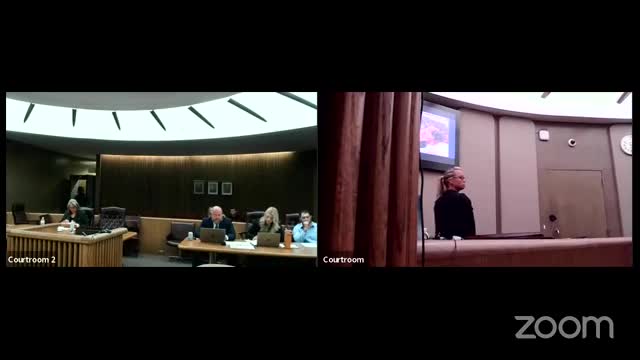Body uncovered in chilling courtroom evidence reveals shocking details
August 21, 2024 | 252nd District Court, District Court Judges, Judicial, Texas
This article was created by AI summarizing key points discussed. AI makes mistakes, so for full details and context, please refer to the video of the full meeting. Please report any errors so we can fix them. Report an error »

In a recent government meeting, critical discussions centered around the examination of evidence related to a homicide case, specifically focusing on the condition of a tarp and the victim's body. The meeting highlighted various state exhibits that documented the physical evidence collected by the coroner's office.
State Exhibit 28 revealed significant discoloration on the tarp, with tape found at both ends but none in the middle section where a coroner's tag was located. This raised questions about the handling of the tarp prior to its examination. Further exhibits, including State Exhibit 29, showed additional tape and wiring, while Exhibit 30 depicted a large hole in the tarp, exposing part of the victim's body.
As the examination progressed, it was noted that the tarp had been partially unwrapped, revealing a second layer of white material secured with duct tape, similar to scraps found at the crime scene. Subsequent exhibits illustrated the gradual exposure of the victim's body, with the lower half eventually being fully uncovered. Observations indicated significant deterioration of the exposed leg, while the wrapped areas appeared to be in better condition.
The meeting concluded with the identification of the victim, confirmed through visible tattoos on the body, as Kayla. The detailed examination of the evidence underscored the complexities involved in forensic investigations and the importance of meticulous documentation in legal proceedings.
State Exhibit 28 revealed significant discoloration on the tarp, with tape found at both ends but none in the middle section where a coroner's tag was located. This raised questions about the handling of the tarp prior to its examination. Further exhibits, including State Exhibit 29, showed additional tape and wiring, while Exhibit 30 depicted a large hole in the tarp, exposing part of the victim's body.
As the examination progressed, it was noted that the tarp had been partially unwrapped, revealing a second layer of white material secured with duct tape, similar to scraps found at the crime scene. Subsequent exhibits illustrated the gradual exposure of the victim's body, with the lower half eventually being fully uncovered. Observations indicated significant deterioration of the exposed leg, while the wrapped areas appeared to be in better condition.
The meeting concluded with the identification of the victim, confirmed through visible tattoos on the body, as Kayla. The detailed examination of the evidence underscored the complexities involved in forensic investigations and the importance of meticulous documentation in legal proceedings.
View full meeting
This article is based on a recent meeting—watch the full video and explore the complete transcript for deeper insights into the discussion.
View full meeting
